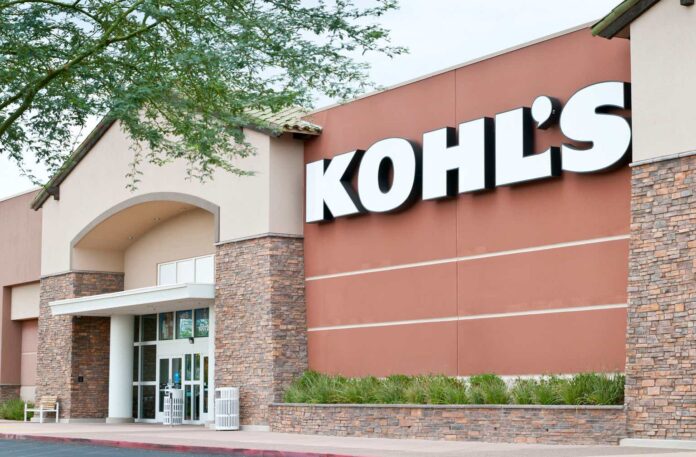Lokibaho
Investment Summary
My previous investment thought on Kohl’s Corporation (NYSE:KSS) (published on 3rd June 2024) was a sell rating because of the poor sales trend and the uncertain macro environment. Since my coverage, the stock has gone down by ~17%, pretty much in line with my expectation for a 20% decline. I still think the business fundamentals are being challenged in the near term, with little chance that KSS can meet its FY24 SSS growth guidance. However, because the valuation has already been revised downwards, and the downside appears to be less today, I am upgrading my rating from sell to hold.
2Q24 Results Update
KSS reported 2Q24 EPS of $0.59; while this was ahead of consensus estimates of $0.44, the beat was mainly driven by cost control rather than improvement in sales trends. Same-store sales [SSS] growth remains poor, with deceleration from 1Q24 of -4.4% to -5.1% this quarter, driving a decline of net sales by 4.2% y/y. What drove the positive EPS performance was an expansion in retail gross margin by 60bps y/y to 39.6% and good cost management that drove EBIT margin up to 4.4%.
Sales Outlook Remains Bleak
The 5.1% negative SSS growth performance marked the second consecutive quarter of deceleration, which is especially concerning considering that KSS saw an increase in transactions and conversion rates. This tells me that average transaction value (basket size * average selling price) is down sharply, supporting the notion that consumer spending remains very pressured. Aside from Sephora (more on this later), which is included in the Accessories category, every single category continued to see negative sales growth, with 2Q24 marking the ninth consecutive decline-no signs of stabilization at all. The efforts made by management to rejuvenate growth are apparently not working at all. Take, for instance, the Women’s category, which is the largest mix of revenue (about 1 quarter of total sales), saw the worst sequential decline despite recent improvements made within the Women’s Dress sub-category.
The only aspect that shined in the quarter was the low-teen SSS growth that Sephora experienced. I am sure some investors will celebrate this, but I believe this actually reflects how serious the underlying demand trend is for KSS’s core categories. For context, outside of Sephora, SSS growth is likely in the negative high single-digits (since blended is already at -5.1%). Here is the bad news: I don’t think the strong Sephora SSS growth is going to sustain into 2H24 as the momentum has decelerated vs. 1Q24. Specifically, Sephora SSS growth decelerated to low teens in 2Q from >20% in 1Q24. While on a two-year stack basis, the trend is stable vs. 1Q24, if we assume the same 2-year stack SSS growth for 2H24, it implies Sephora SSS growth will decelerate further by a sizeable margin to low-to-mid-single-digits in 2H24. Without trying to pinpoint the exact percentage, we could potentially see ~10pts of deceleration if “low teens” in 2Q24 are ~12%.
(Note: all of Sephora SSS growth data can be found in the company earnings presentation, where management commented qualitatively).
This is definitely not going to sit well with investors, as it means KSS is very likely going to miss the FY24 SSS growth guidance. The implication is that in order for KSS to meet the midpoint of management’s implied 2H24 SSS growth guidance (~-3.8%), KSS’s core categories have to see very strong acceleration, which I am not sure is possible given the current macro condition (more below) and 1H24 sales trend. As a reference, if we assume no improvements in the core categories and Sephora shows growth as I expected, it implies 2H24 SSS growth will dip further into high single-digits on a blended basis (remember 2Q24 saw -5.1% despite low-teens Sephora SSS growth) -a big discrepancy vs. the implied -3.8% decline.
Macro Pressure Remains Apparent
Hence, the question is whether KSS can see acceleration in the core categories. Based on how the macro environment is today, I am not confident that this will be the case. It is apparent that consumers are still cautious in their spending, preferring value buys, which has benefited many value retailers (e.g., Target, Walmart, and others). The consumer confidence index also provides little grounds to believe discretionary spending will pick up. Per management’s own words, they are also seeing their customers showing more discretion during the quarter. Lastly, with interest rates still at elevated levels vs. recent history, consumers continue to feel the pain from it (per KPMG report). Therefore, my take is that consumers will continue to: (1) trade down to more value purchases, and (2) pull back on discretionary spending. Neither of these is supportive of SSS growth acceleration for KSS.
Valuation
Since my last coverage, KSS forward PE has declined from ~12.5x to 10x today, a trend that peers have also demonstrated (peers include: Dillard’s, Inc. (DDS), Nordstrom, Inc. (JWN), and Macy’s, Inc. (M)). Currently, KSS is trading in line with peers at 10x forward PE, which, I think, shouldn’t be the case given that KSS has the worst expected revenue growth and balance sheet profile:
- Per consensus estimates, KSS is expected to see ~8% revenue decline over the next 12 months vs. ~low to mid-single digit decline for peers.
- KSS has a net debt to EBITDA ratio of ~4.7x vs. DDS at net cash, JWN at 3.2x, and M at 4.3x.
Plotting KSS’ multiples against peers over the past 2 years, the biggest discount it ever traded was ~10%. Using that as a yardstick for the potential valuation downside, KSS could potentially trade down to ~9x. Attaching 9x to consensus FY25 EPS suggests a share price target of ~$18.8. Given that the downside is much less than the last time I wrote about the stock, I am not going to advocate a sell rating.
Conclusion
My view for KSS is a hold rating. While this is an upgrade, it is only because it appears there is less downside today. I still think the fundamentals are challenged in that the sales outlook remains bleak given the continued deceleration in SSS and a challenging macroeconomic environment. Using historical trends, multiples could go down further by another 10%, implying a share price target of $18.8 (not so far off from the current share price).



